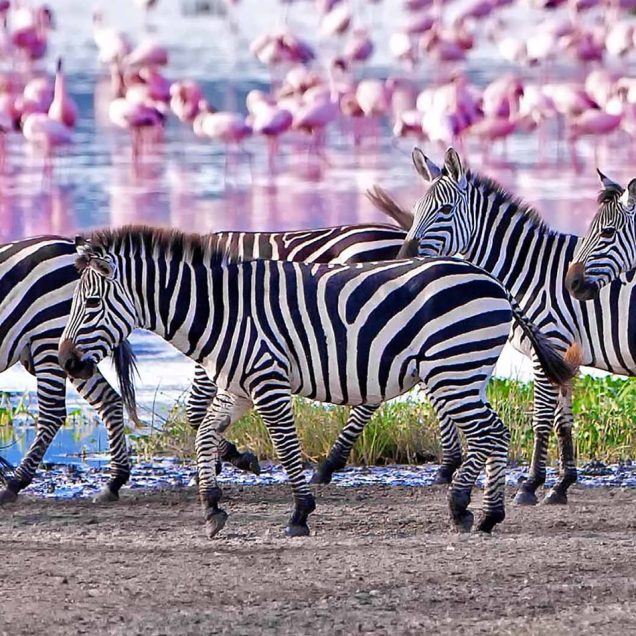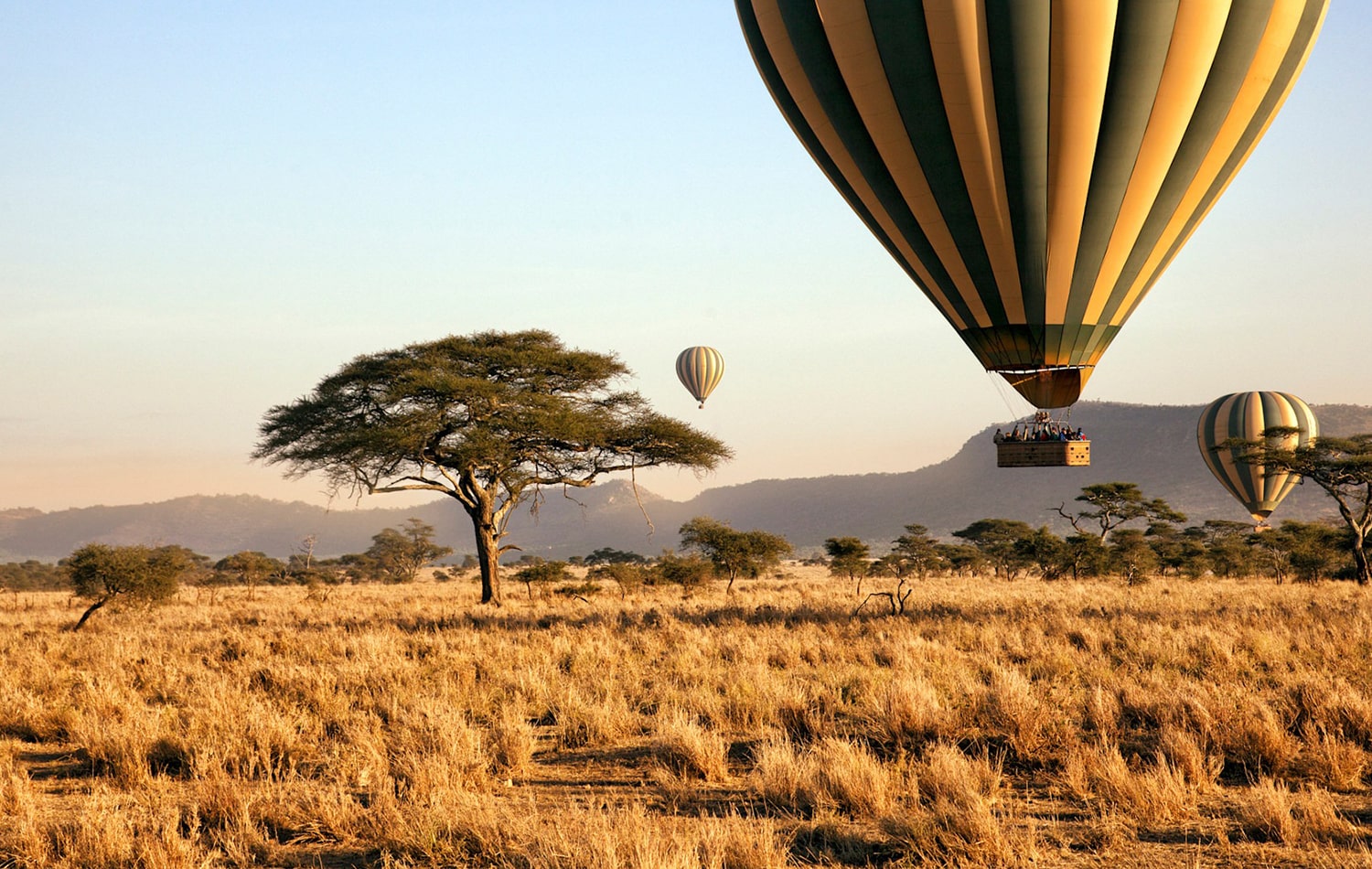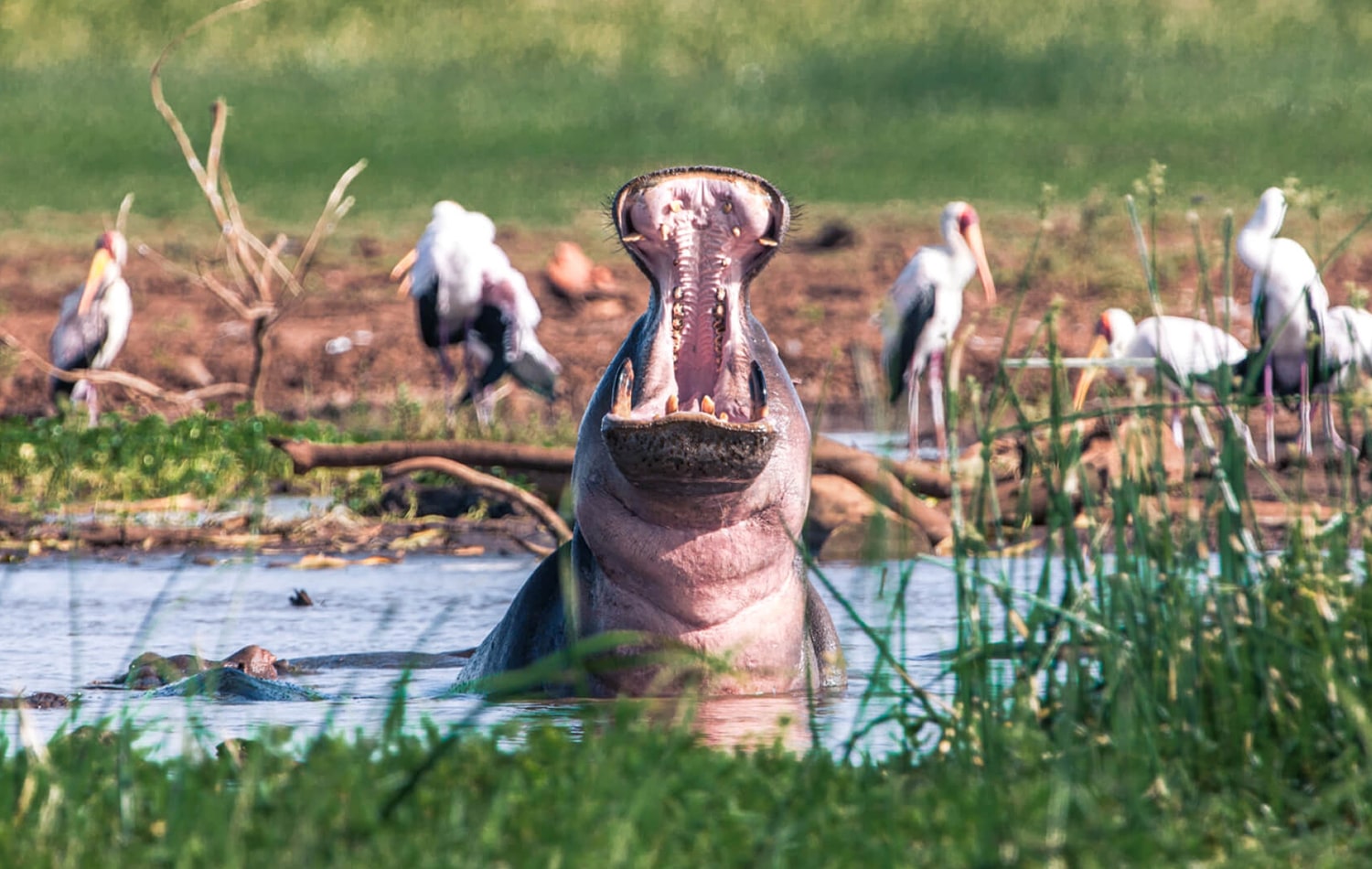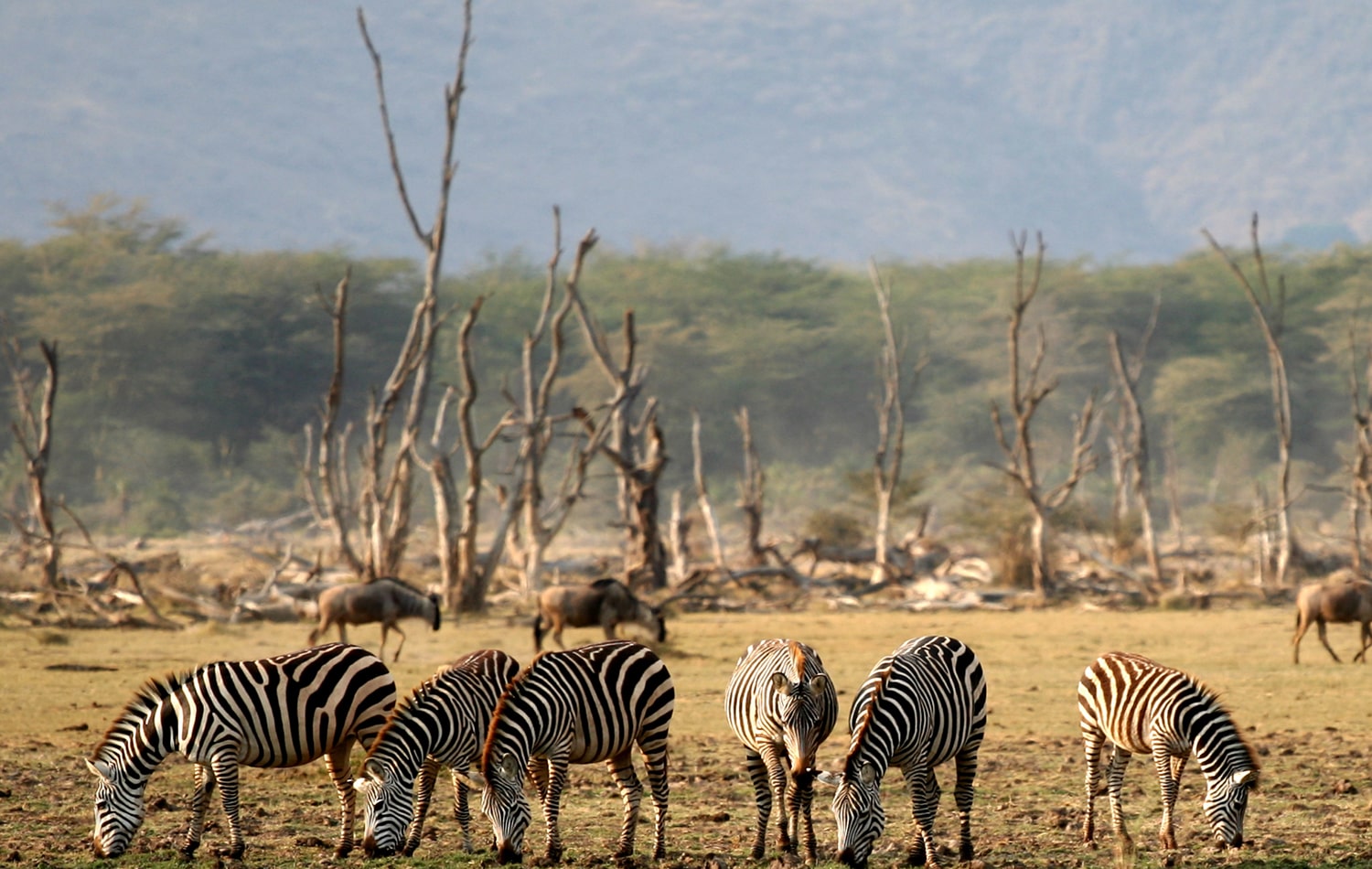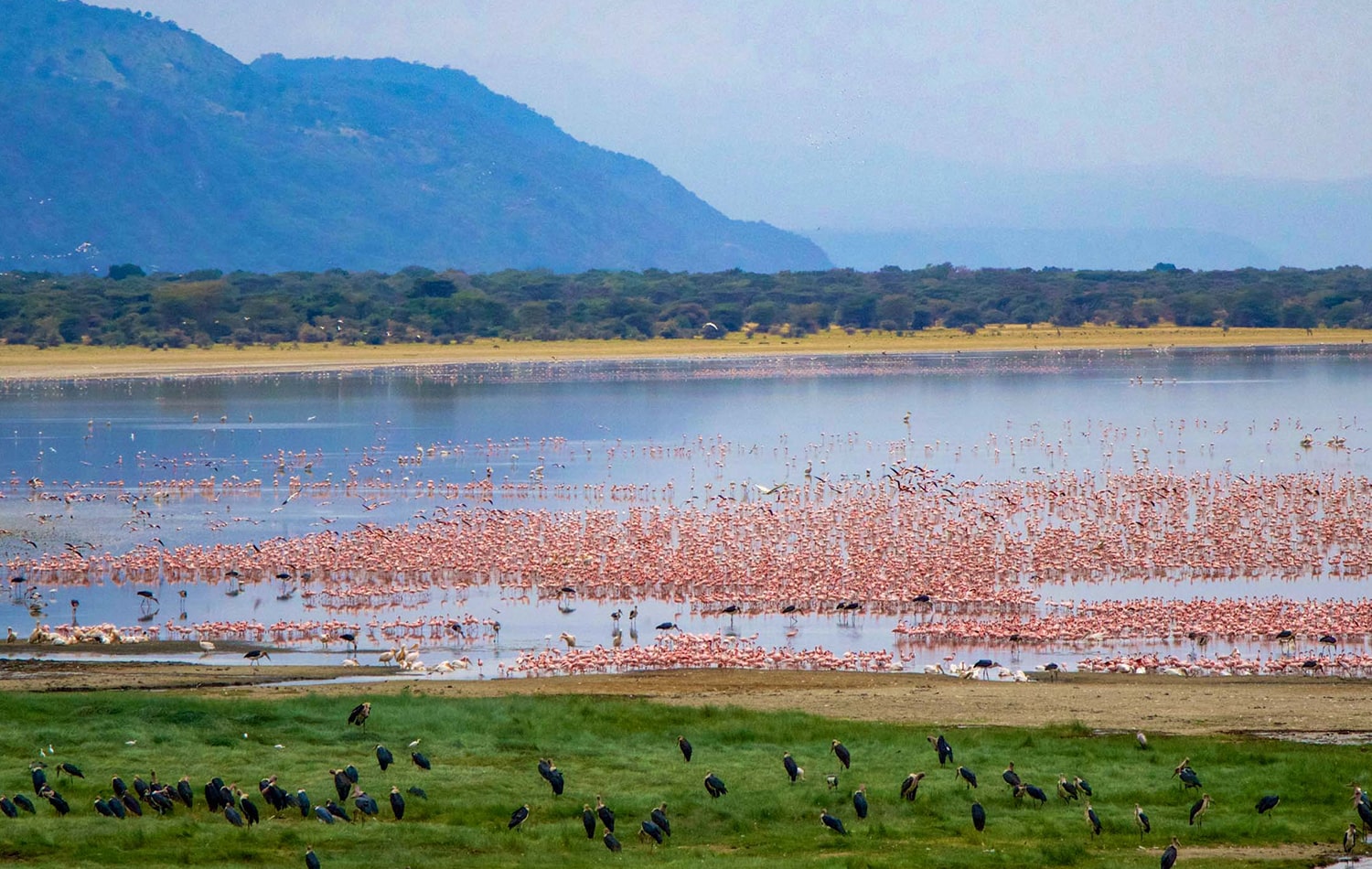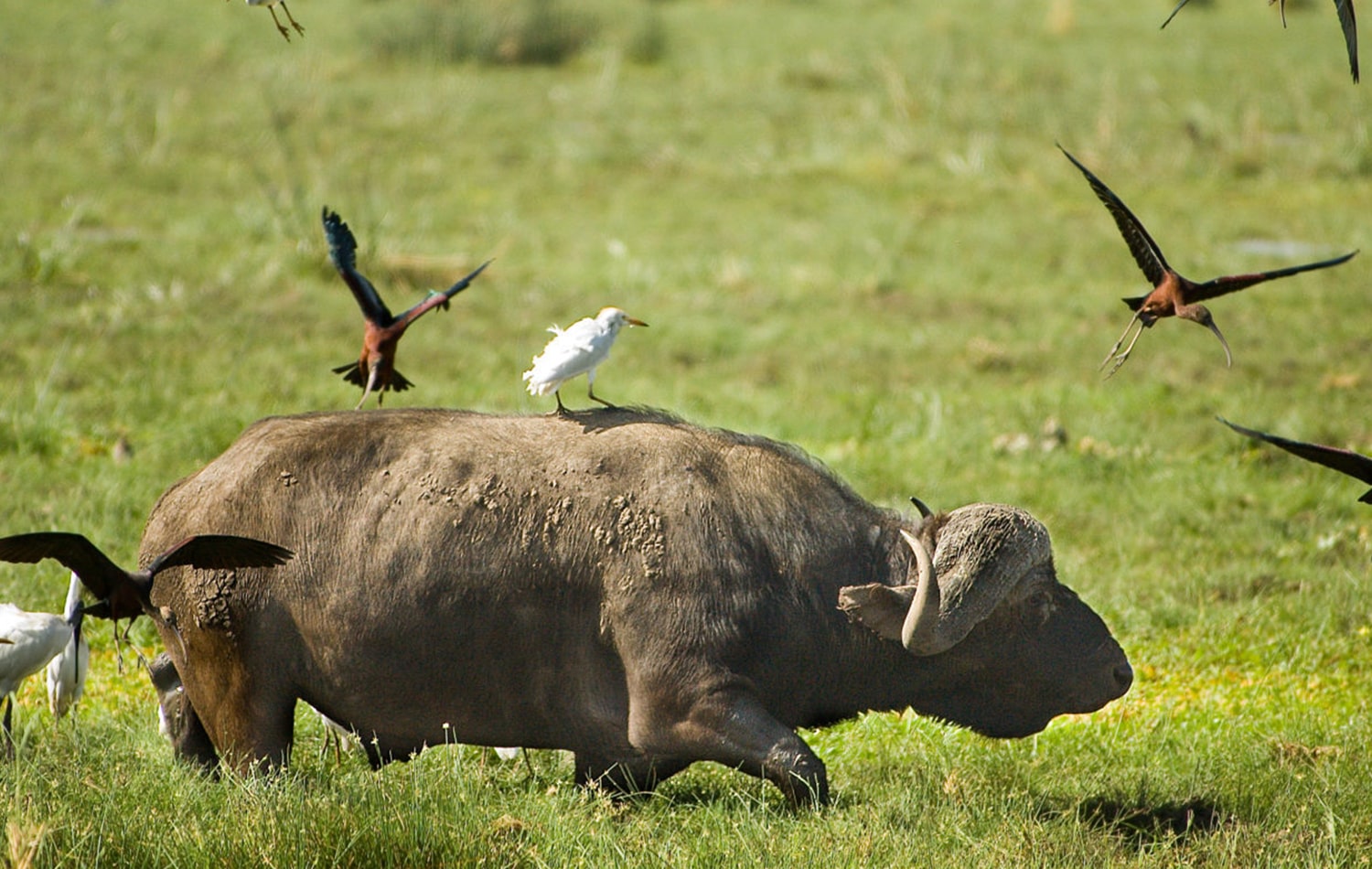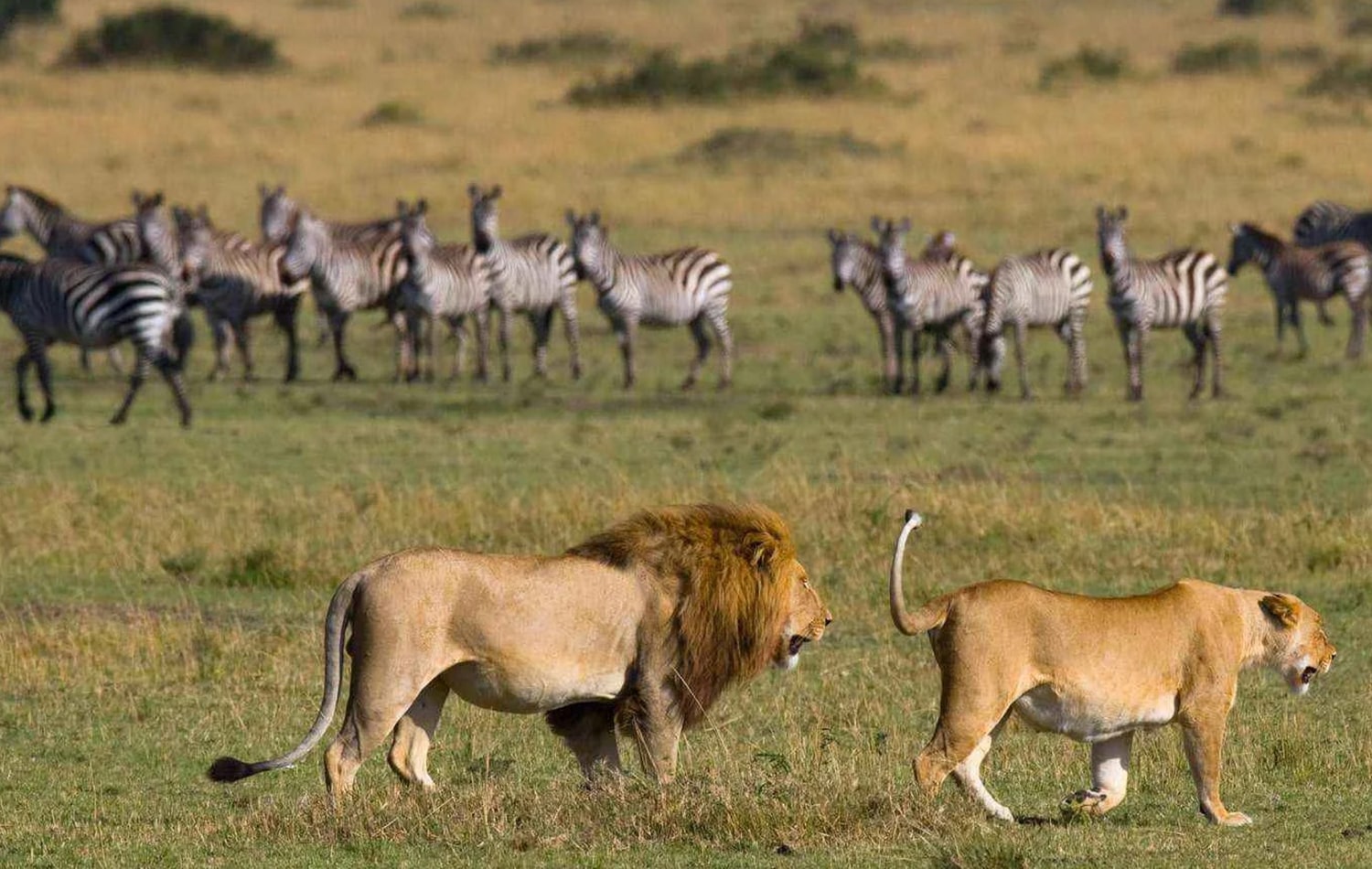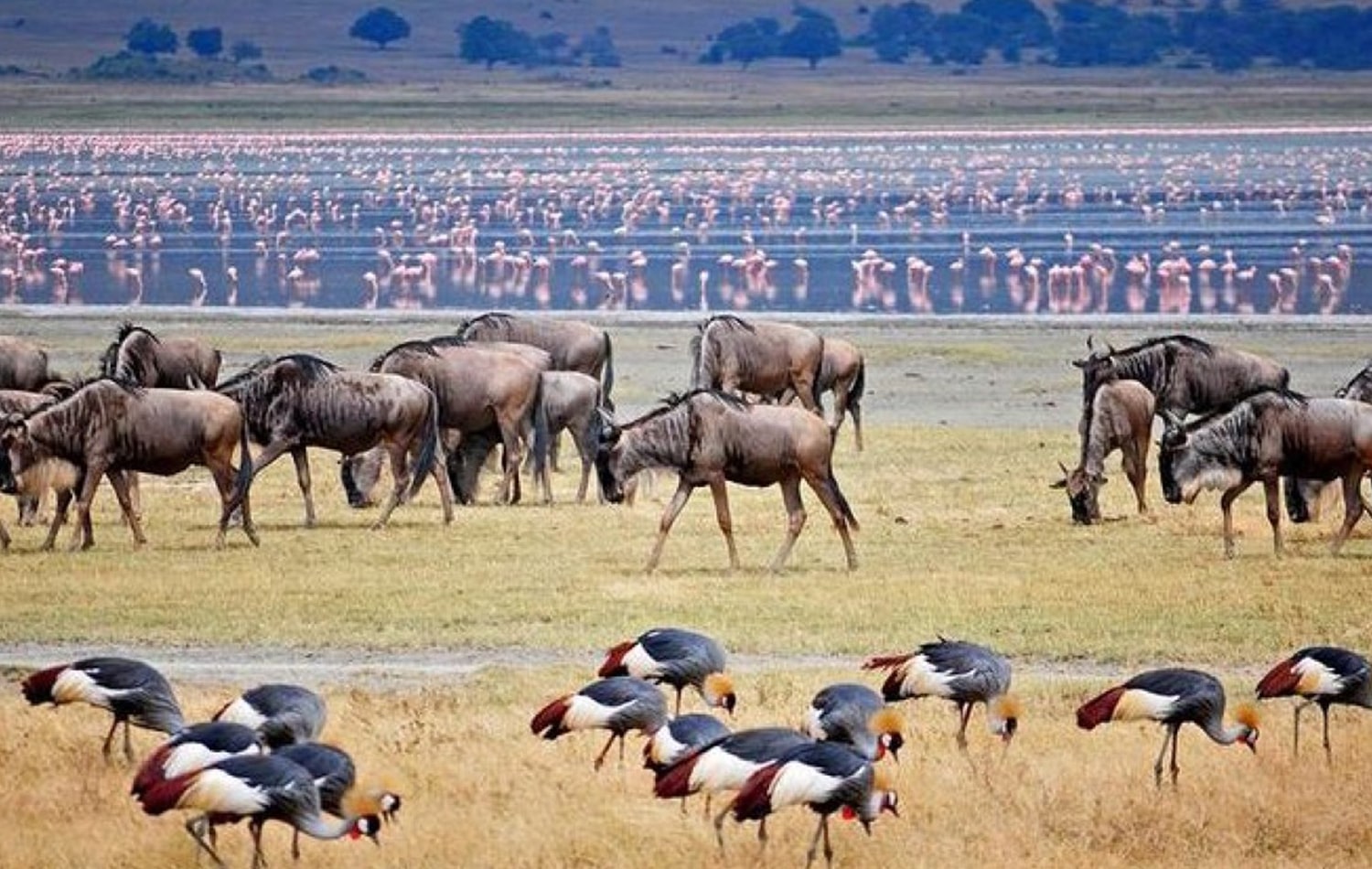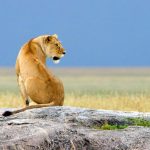

Overview
Lake Manyara National Park, located in northern Tanzania, is a compact but diverse wildlife haven famed for its tree-climbing lions, large flamingo flocks, and scenic landscapes. Set between the Great Rift Valley escarpment and Lake Manyara, the park features groundwater forests, acacia woodlands, and vast wetlands. Despite its small size, it offers rich biodiversity and excellent game viewing, making it a perfect stop on Tanzania’s Northern Safari Circuit.
Sights
Map
Info
A Scenic Jewel of the Rift Valley
Lake Manyara National Park may be smaller than many of Tanzania’s other parks, but what it lacks in size, it more than makes up for in ecological diversity and dramatic scenery. Nestled at the base of the Great Rift Valley escarpment and stretching across the edge of the alkaline Lake Manyara, the park covers approximately 330 square kilometers of land and 200 square kilometers of lake during peak water levels. Its landscapes are strikingly varied — lush groundwater forests fed by springs, open grasslands, acacia woodlands, and expansive marshes and floodplains—all within a compact area. This ever-changing environment makes Lake Manyara feel like multiple parks in one.
As you enter through the forested northern gate, towering fig and mahogany trees create a cool, shady corridor teeming with monkeys and birds. Drive a few kilometers south, and the forest opens up into plains where giraffes and zebras graze against the shimmering backdrop of the lake. The park’s geography is not only visually stunning but also ecologically crucial, acting as a buffer and breeding ground for migratory species and supporting a wide range of permanent wildlife.
Wildlife Encounters: From Tree-Climbing Lions to Flamingos
Lake Manyara National Park is best known for two remarkable wildlife attractions: its population of tree-climbing lions and the vast flocks of pink flamingos that gather at the lake’s edge. These unusual lions have developed a rare behavior of resting in acacia trees—an iconic and somewhat mysterious trait observed in only a few places in Africa. While lion sightings are a major draw, the park also boasts large numbers of elephants, often seen moving through the forest in family groups, foraging on bark and leaves.
Hippos are common and best spotted in the Hippo Pool or near the lakeshore, while troops of baboons — some of the largest in Africa — roam the forest in impressive numbers. Other herbivores include wildebeests, impalas, giraffes, waterbucks, and bushbucks. The birdlife is even more spectacular, with over 400 recorded species. Depending on the season, Lake Manyara’s alkaline waters attract thousands of flamingos that paint the lake pink. Pelicans, cormorants, storks, eagles, hornbills, and kingfishers are also regularly spotted, making this park a paradise for birdwatchers. Its biodiversity, packed into such a compact space, ensures that no two visits to Lake Manyara are ever the same.
Adventure, Accessibility & Conservation Harmony
Lake Manyara National Park is not just a stopover on the Northern Safari Circuit—it’s a complete experience that offers nature, culture, and adventure in harmony. Its proximity to Arusha (just a two-hour drive) and nearby attractions like Ngorongoro and Tarangire makes it a convenient and rewarding destination for both short and extended safaris. Game drives are the most popular way to explore, offering close encounters with wildlife in varied habitats. Walking safaris, available in some zones, allow guests to explore the forest on foot under the guidance of experienced rangers, providing an immersive connection to the park’s ecosystem.
The park also supports cultural tourism through visits to nearby communities such as Mto wa Mbu, where travelers can learn about local farming, cuisine, and crafts. Conservation efforts are strong here—Lake Manyara is part of a UNESCO-designated biosphere reserve, and initiatives are in place to mitigate human-wildlife conflict and promote sustainable ecotourism. Whether you’re seeking a peaceful birding escape, a thrilling wildlife encounter, or a scenic picnic under baobabs, Lake Manyara delivers a rich and balanced safari experience unlike any other in Tanzania.

